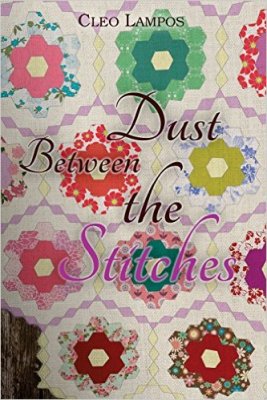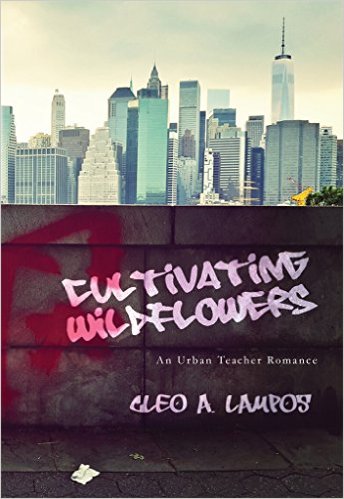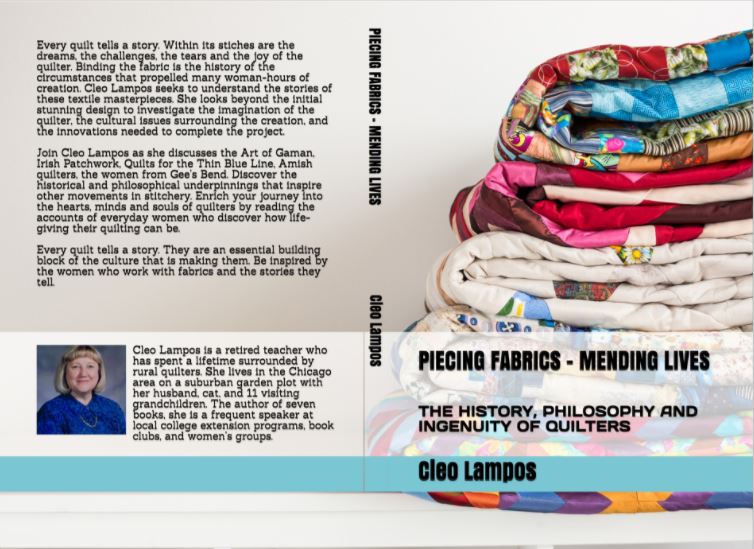Cleo Thoughts, Gardening, Quilts
Quilt Gardens: From Fabric to Soil
“Let your creativity bloom.” – Jo-Ann Fabric and Craft Store
Quilters hide green thumbs under their thimbles. When spring breezes beckon them outdoors and the soil invites their fingers to dig in, these creators of fabric turn to their organic roots. Taking the skills of color contrast, design and texture to the natural side of life, stitchers plant quilt gardens. Traditional quilt patterns burst into life with butterflies, bees and dragonflies adding shocks of color and movement.

Flower quilts of northern Indiana by Sandy
Cara Burgess, from the Carolina Gardens, provides the basis for the tips on creating a quilt garden.
- Plan the quilt garden in January when snow covers the ground.
- Use graph paper to plan the design’s layout.
- Search for free quilt templates on line
- Select plants that do not spread or vine (marigolds, pansies begonias, impatiens are good choices for this project).
- Choose plants that are compatible in height and growth rate.
- Lay out the pattern on the ground with stakes and string, or paint it onto the soil.
- Allow spacing between plants so they can expand and fill in.
- Take advantage of a slope for maximum presentation.
Additional tips:
Start planting flowers from seed in a green house or basement.
Make a mini quilt in a container if there is no garden space.
Create a lettuce crazy quilt for veggie lovers
Use sedum or low-growing grass for color and texture.
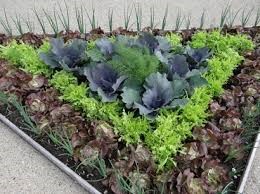
Villandry Quilt Garden at Kansas City’s Botanical Garden
“I realize now that perfection can never be achieved, and plants can be pruned, moved, or even discarded to the compost heap with the help of a wheelbarrow,” states Marietta O’Bryne. She never shies away from creating the exact garden image that is pictured in her mind. Her realistic view of the process allows a quilter-gardener the freedom to explore and improve. Ripping out seams to align a fabric square translates to the earthy choices of plants.
For apartment dwellers and those who kill plants, the next best thing to creating a quilt garden is to visit those that grow in the minds of talented visionaries. Indiana’s Heritage Trail, Elkhart County-Indiana, Goshen-Indiana and the Wheaton Arts and Cultural Center of Millville, New Jersey represent some of the places to discover the art of garden quilting.
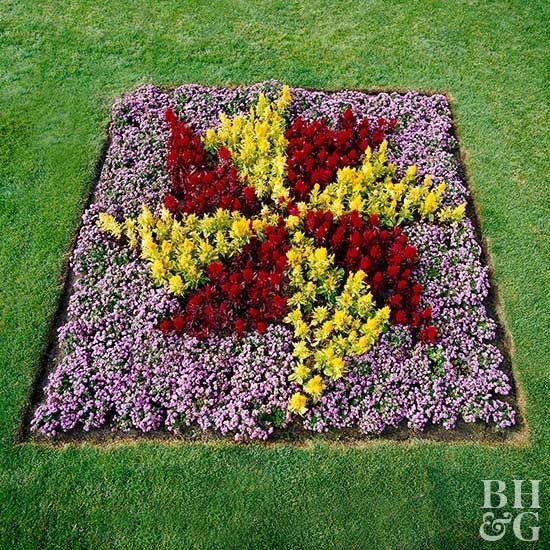
Better Homes and Garden
Creativity drives quilters to design and produce masterpieces. A change in medium from needle and thread to trowel and hoe snaps the unused parts of the brain needing a great awakening. Switching from fabric to soil energizes the fingers and awakens deep emotions. A quilt garden brings rest to the weary soul with a colorful display.
“Whenever you are creating beauty around you, you are restoring your soul.”- Alice Waters
Author Cleo Lampos and her husband earned the Urban Farmer’s certificate from the University of Illinois. The couple garden in the greater Chicago area. Lampos is also an avid quilt collector who has created several quilts. She has authored books in which quilts are featured.

